10 Retro Games That Need a Reboot, Remake, or Remaster
Main image: Xanadu: Dragon Slayer II Games Lists retro games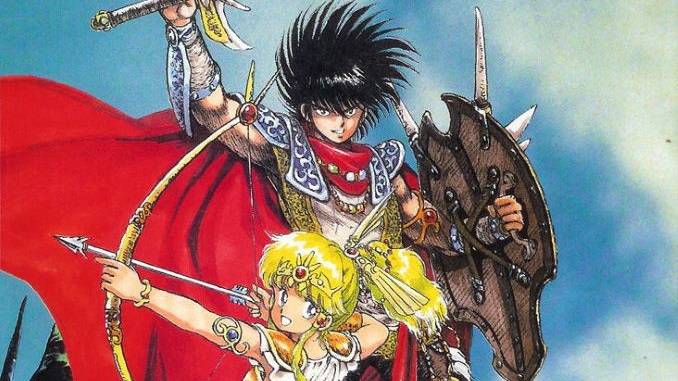
Between digital access to videogames and publishers whose sole mission seems to be keeping the past alive in the present, we’re in something of a golden age of retro. That’s why there’s always some recent remaster, reboot, remake, or series collection that either just released or is about to. We could have even more remasters and reboots and remakes and series collections, though. Do you know how many videogames were released during the 8- and 16-bit eras? It’s more than you think: there were still Super Famicom games releasing in Japan during almost the entirety of the Nintendo 64’s lifespan!
There’s plenty of pixelated retro left to mine and reintroduce to today’s audiences, so let’s dive into a bunch of games that aren’t Mother 3. (We all know that one needs a re-release; no need to use up precious word count on the obvious.)
Adventures of Lolo

Adventures of Lolo released on the NES in 1989, but HAL Laboratory’s first successful franchise actually has its roots on the Japanese computer platform, the MSX. That first NES Lolo game was a selection of levels from the first two Eggerland games, as they are known in Japan and Europe. HAL used to publish their own games with far more regularity, and Eggerland/Lolo was one series that was all them, in the years before their second-party relationship with Nintendo.
The puzzler is still good fun today: you control Lolo, who is attempting to save his girlfriend, Lala, from the clutches of King Egger. You do so by solving a series of 50 puzzle-based rooms. Within, you’ll avoid making contact with enemies—one hit will kill you—while attempting to collect all of the hearts scattered around, which will open the treasure chest that contains the key to unlock the exit. The obstacles and solutions are continually shifting and gaining complexity, and you can’t stand around waiting to sort it out, because many of the game’s foes are hunting you.
There are three Lolo games on the NES, but for whatever reason, only the first one is ever available anywhere, be it the various Virtual Consoles or the NES Switch Online service. There hasn’t been a new Lolo in North America since 1991, and even in Japan, the last came in 2000, for Windows. A new Lolo would be great, but even just a collection of the ones that already exist for the Switch and computers would be welcome.
Star Soldier

Hudson Soft is no more, but the rights to Star Soldier (and every other Hudson property) belongs to Konami these days, so it’s not like they’re in limbo. Well, other than the limbo most of Konami’s IP are in, anyway.
Star Soldier games are tough to find: the original is on the NES Switch Online service, but its NES sequel, Starship Hector, is nowhere to be found, and the trilogy of Turbografx-16/PC Engine Star Soldier games are only available on Nintendo’s sunsetting Wii U and the perpetually out-of-stock Turbografx-16 Mini. Star Soldier: Vanishing Earth might never show up on the N64 Switch Online service, the 2006 crossover with DoDonPachi was developed for Japanese mobile phones in 2006, and the final one of these games, Star Soldier R, was a WiiWare title. So we might never see those again.
That’s disappointing, as the Star Soldier games are fun, especially the PC Engine trilogy, which Hudson based on the work of shmup legends Compile: the developers of Aleste worked on Hudson’s Blazing Lazers, and Hudson decided that subsequent Star Soldier games should also play like that. A new Star Soldier that combines the addicting score multiplier mechanics of Vanishing Earth with the Compile-style deep arsenal of weaponry could be a winner! And if Konami doesn’t want to find a developer to handle that, they could at least find one to put together a long overdue collection, like M2 recently did for Compile’s early Aleste games.
Dragon Slayer
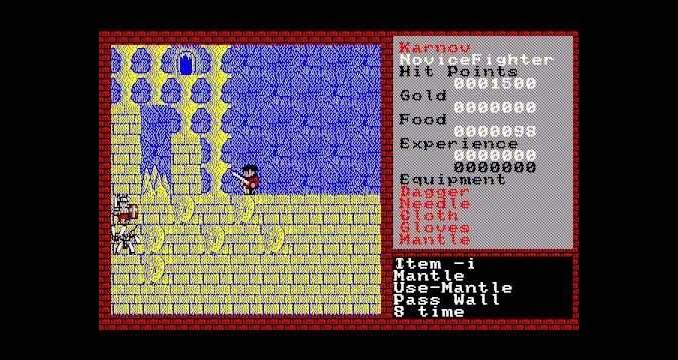
Would you like to play Nihon Falcom’s Dragon Slayer, or its sequel Xanadu, on a platform where these originators of the action RPG actually released? All you have to do is buy a Sega Saturn, and then mod it so it can play Japanese discs, and then import or burn a copy of Falcom Classics, which for some reason had English-language versions of those games on there that otherwise don’t exist. Easy, right? If you want to play a later Dragon Slayer title, Sorcerian, you need the MS-DOS release, and to convince your PC it can run DOS games. Lord Monarch? Fan translated Mega Drive ROM. Dragon Slayer: The Legend of Heroes II? Legend of Xanadu II? I hope you can read Japanese and know how to emulate PC Engine CD-ROM² games, because they aren’t fan translated, and they aren’t available elsewhere, either.
Falcom has remade every Ys game in need of remaking besides V, and with NIS America’s localizations, the entirety of The Legend of Heroes offshoot, the Trails series, will also be playable on North American consoles within the next few years. The Dragon Slayer games, the ones that turned Falcom into the legend they are, though? Basically forgotten. That needs to change, as some of these titles are still-fun proof of why Falcom was on the same level, and just as innovative and vital, as other Japanese RPG giants like Enix and Square in the ‘80s and ‘90s. Get someone to localize the originals for re-release, license out remakes, just do something besides let these games rot.
Axelay
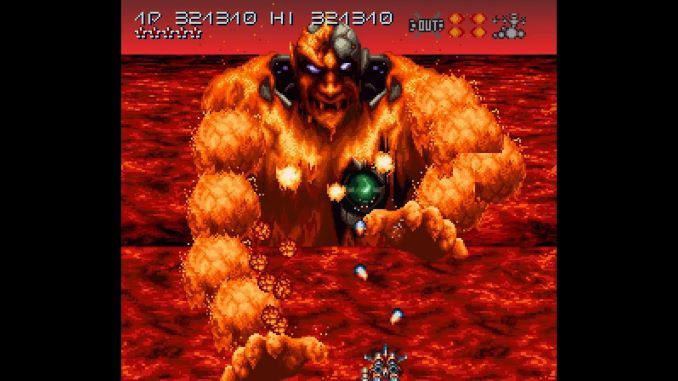
You could make a pretty compelling argument that Axelay is the best shmup on the SNES, and a not-insignificant part of that is how it was obviously built from the ground up with the console’s strengths and features in mind. It couldn’t avoid the slowdown that plagued so many SNES shoot-em-ups, no, but it more than made up for those hitches with some excellent graphical effects, and alternating between horizontal- and vertical-scrolling levels, which didn’t just change the view, but also how you would approach enemies and your weapons’ effectiveness. The horizontal stages were somewhat traditional—though action-packed and featuring fantastically detailed enemy sprites and bosses—but the vertical stages attempted pseudo-3D effects and a behind-the-ship view that made it seem like you were flying toward the horizon.
Axelay is on the Wii U Virtual Console, but that’s it. A remake that utilizes the same kind of ambition that brought us the original would be a thing of beauty. Of course, making the original itself available on systems people own would also suffice, because it still rules, even if some of the graphical effects have aged in the last 29 years.
Gimmick!
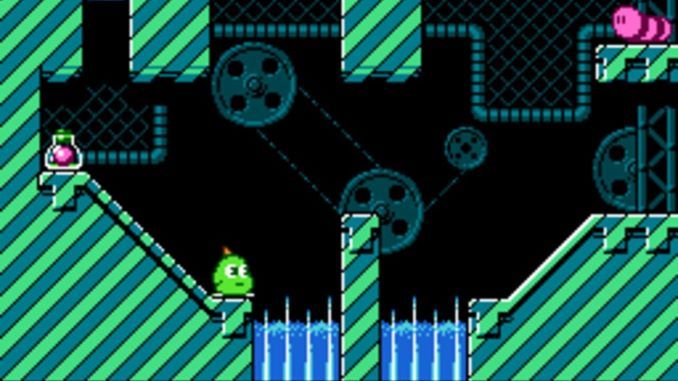
Sunsoft really knew how to make a platformer, and Gimmick! is one of their standouts. It was a late-life Famicom title, releasing in 1992, 14 months after the Super Famicom hit shelves. Between this late release and the fact its only non-Japan availability was in Scandinavia, it is an unknown piece of history for your average gamer. And that’s a shame, because Gimmick! is one of the better games on the Famicom, and ambitious and involved enough that it would be a popular digital download if it were released as a throwback-style platformer today.
You play as a small Oni named Yumetaro, who is attempting to rescue a young girl from her toys, which came alive and kidnapped her by bringing her into another dimension. It’s here that you’ll attempt to save her, and it is not easy. You can find various attack skills in bottles throughout levels (you can store up to three of them), but you’ll spend most of the time mastering Yumetaro’s star, which can be charged up and used as an attack or as something you can ride to cross platforms, avoid danger, and so on. Basically every screen in the game is a platforming and physics challenge to overcome, and you can’t really stop moving, because the enemies are highly aggressive. It’s not an unfair game, it just has its systems, a la modern difficult platformers like Celeste, and you need to master them.
Gimmick! was remade for arcades in 2020, so porting it to homes wouldn’t be arduous. So, port it, already. And make the original available to buy literally anywhere, too.
Penguin Land

It’s difficult to complain about Sega failing to re-release or update any of their classic titles, because they have multiple series dedicated to that very thing: a line of 3D Classics on the 3DS, Genesis collections, a killer mini console, and the Sega Ages line that has existed since the days of the Saturn.
And yet, there is Penguin Land. Sure, it’s in Lost Judgment, but this puzzle platformer from 1987 is mostly forgotten as far as releases go. The last new Doki Doki Penguin Land game arrived on the Mega Drive in Japan in 1991, and then again in a Sega CD compilation. There has been some porting of the 1985 original, but the series all but vanished, despite its perfect blend of adorableness and difficulty.
You play as Commander Overbite, a penguin tasked with rescuing lost penguin eggs found in caverns on an unnamed planet. You bump the eggs around to move them and drop them deeper into the canyon where your crewmates await, but don’t drop them too far at once, or they’ll break. Don’t push them into walls, or let enemies get them, or traps fall on them, or any number of things that’ll break these eggs and cost you a life. It’s fun, and tough, too, since there is a timer counting down, with Sega’s classic ‘80s impatience built in. Maybe the best reason to re-release or update it in the present, though, is that it has a level editor: the original had 50 puzzles to solve, but if you let people build their own and share them online, Penguin Land could be something once again.
For the Frog the Bell Tolls

Known as Kaeru no Tame ni Kane wa Naru in Japan, it has never seen an official international release. You might know of one of its characters, Richard, however, as they appeared in The Legend of Zelda: Link’s Awakening. This action RPG predates Link’s Game Boy adventure by a year, and was developed by Nintendo R&D1 and Intelligent Systems. And yet, despite the popularity of those studios’ games abroad, Kaeru no Tame ni Kane wa Naru remains a Japanese exclusive.
While there is a fan translation, Nintendo should take it upon themselves to remake it for an international audience: Link’s Awakening already used a similar graphical style in ‘93 as well as its combination top-down/side-scrolling design, so why not swap things around and have the adventure of Prince Sable utilize the same look as the Switch remake of Link’s Awakening? It would be worth it: in many ways, it has the same kind of fourth-wall-breaking humor that’s all over Intelligent Systems’ Paper Mario games, and plays much differently than modern action RPGs. And not just because you’re turned into a frog for large chunks of the game.
Battle Mania
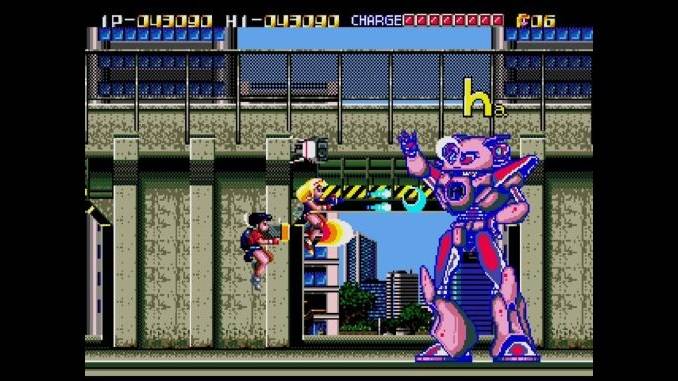
The first Battle Mania game released in North America as Trouble Shooter, a Sega Genesis exclusive shoot-em-up where you controlled two teenage girls as they attempted to rescue a kidnapped prince. You control Madison directly, while her partner Crystal tails behind her: you can flip Crystal around so she fires either left or right, collect power-ups that allow you to drop bombs or expand your firing range, and charge up a special weapon of your choosing that is meant to aid in boss fights and to help clear the screen of foes in a pinch. You have to avoid foes and their projectiles, of course, but the environment is also full of hazards.
The gameplay is a lot of fun, and it’s also a funny game intent on parodying and paying homage to bounty-hunter anime like Dirty Pair and shooters like R-Type (stage three takes place around an enormous battleship, as is the way of the genre) and Forgotten Worlds. The second game, Battle Mania: Daiginjo, is even better—one of the best shoot-em-ups on the loaded Mega Drive, even—though you can’t understand a word of it unless you can read Japanese. Developer and publisher Vic Tokai isn’t in the games business like they used to be—their last new release was on the N64—but they could always license out these two games for a re-release or remake or retro-style sequel. And they should, because they’re underappreciated gems for fans of the genre.
Ganbare Goemon

At the least, we deserve a Super Famicom/SNES collection of all of Goemon’s great adventures on the platform. Sure, Konami would have to localize three of the four of them, since they didn’t bother back in the ‘90s, but that changes nothing as far as wanting it to happen goes. Legend of the Mystical Ninja is relatively available right now, as it’s on the Nintendo 3DS and Wii U eShops, but only until the spring of 2023, and then what?
Ganbare Goemon is loaded with great titles across a ton of consoles, handhelds, you name it, and it’s so disappointing that they’re either locked away behind a language barrier, or, in the case of the ones that did make it to North America, are impossible to find, like the pair of Nintendo 64 titles. These games didn’t always end up receiving a worldwide release, because it was the ‘90s, and things that were as steeped in Japanese culture and humor as these games tended to be were outright criticized for it. North America has somewhat learned their lesson there in the intervening years, so why not give us a second chance? Natsume is doing it with a Pocky & Rocky revival, so why not Goemon?
Terranigma

The crown jewel of Quintet’s tremendous Super Famicom output, Terranigma never arrived on North America shores thanks to the closure of Enix’s offices there. Nintendo of Europe did localize and publish it into English in 1996, 14 months after Enix released the game in Japan, but Nintendo of America decided against doing the same in their own region. Possibly because it was nearly 1997 by then, and the Nintendo 64 was their focus.
It’s an exceptional action RPG, arguably the best on a console known for some all-timers in the genre, that plays wonderfully and sounds just as good. It is a thoughtful game, too, as the developers of ActRaiser and Illusion of Gaia were known to create: you are destined to resurrect the world, from plants to animals to people, and it is a heavy burden involving as many sacrifices as there are twists and turns in the story. You will defeat demons, you will release souls from their prisons, you will help rebuild towns, you will foil plans and foes. You also might cry over the fate of a goat.
Terranigma is a beautiful game, one Square Enix holds the rights to, and it should be available to buy somewhere, but it isn’t. That needs to change, and while an Actraiser Renaissance-style remake could also be a good time, one hopes Square Enix would let the original masterpiece breathe more here instead of trying to update it as much as they did ActRaiser.
Marc Normandin covers retro videogames at Retro XP, which you can read for free but support through his Patreon, and can be found on Twitter at @Marc_Normandin.